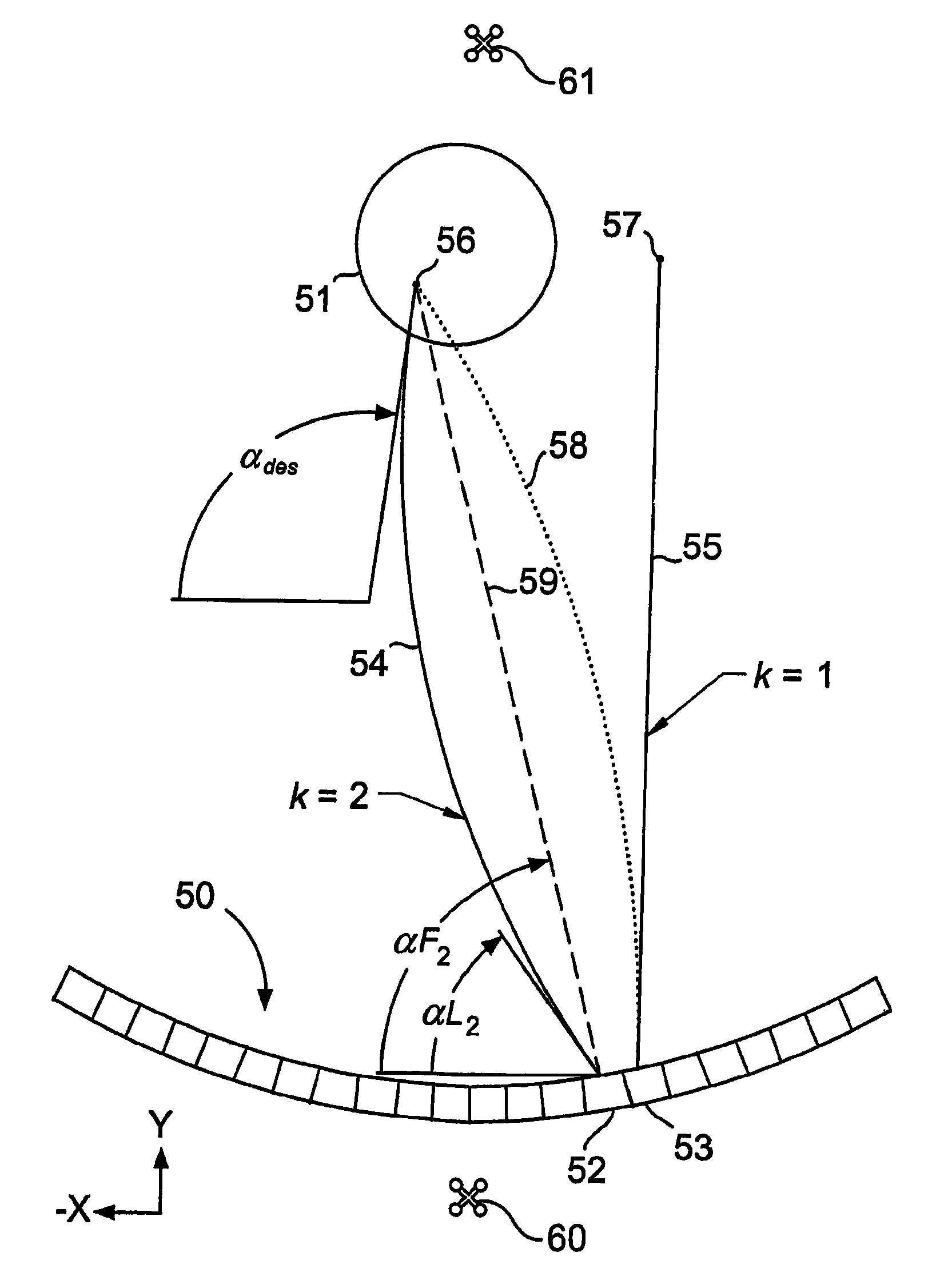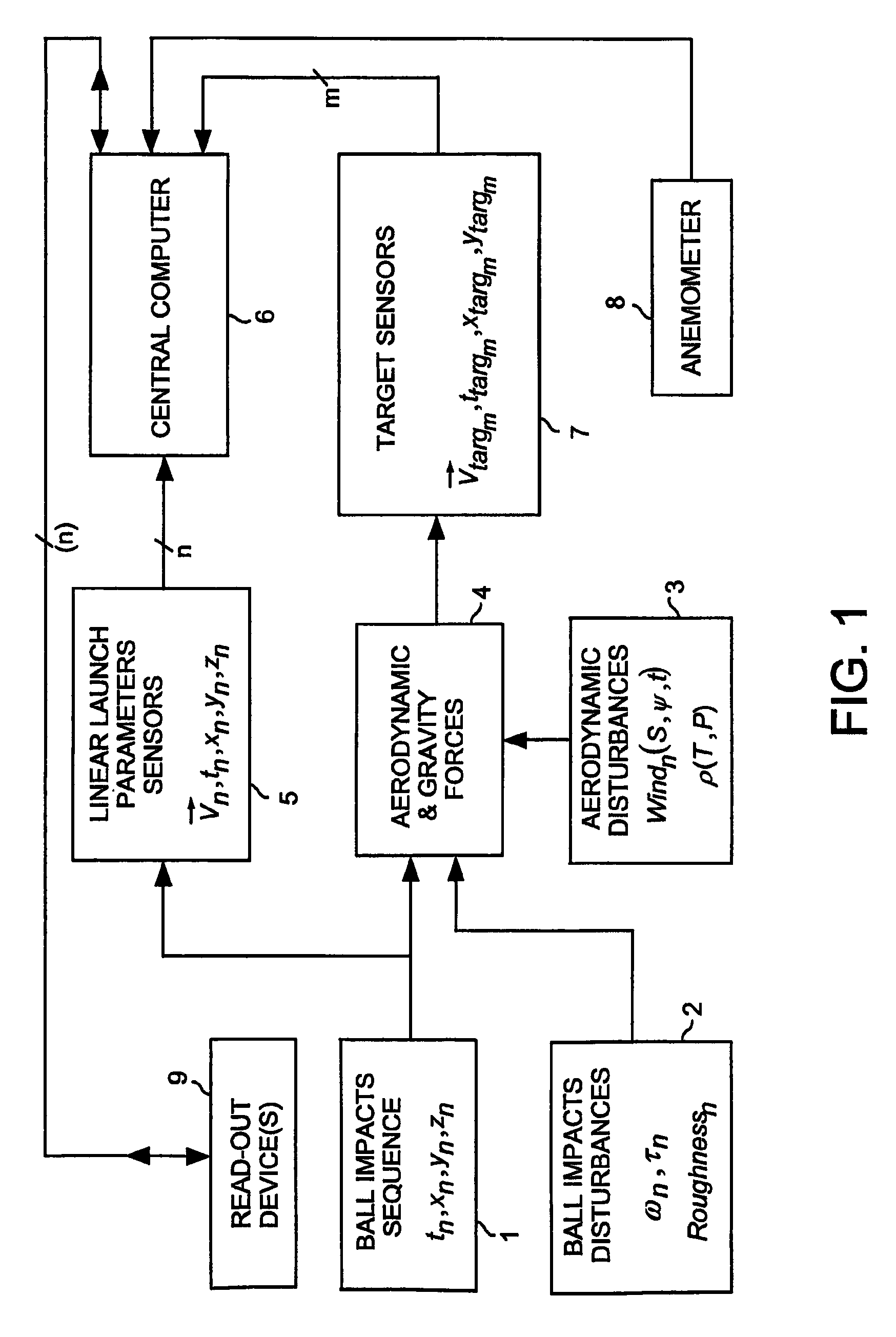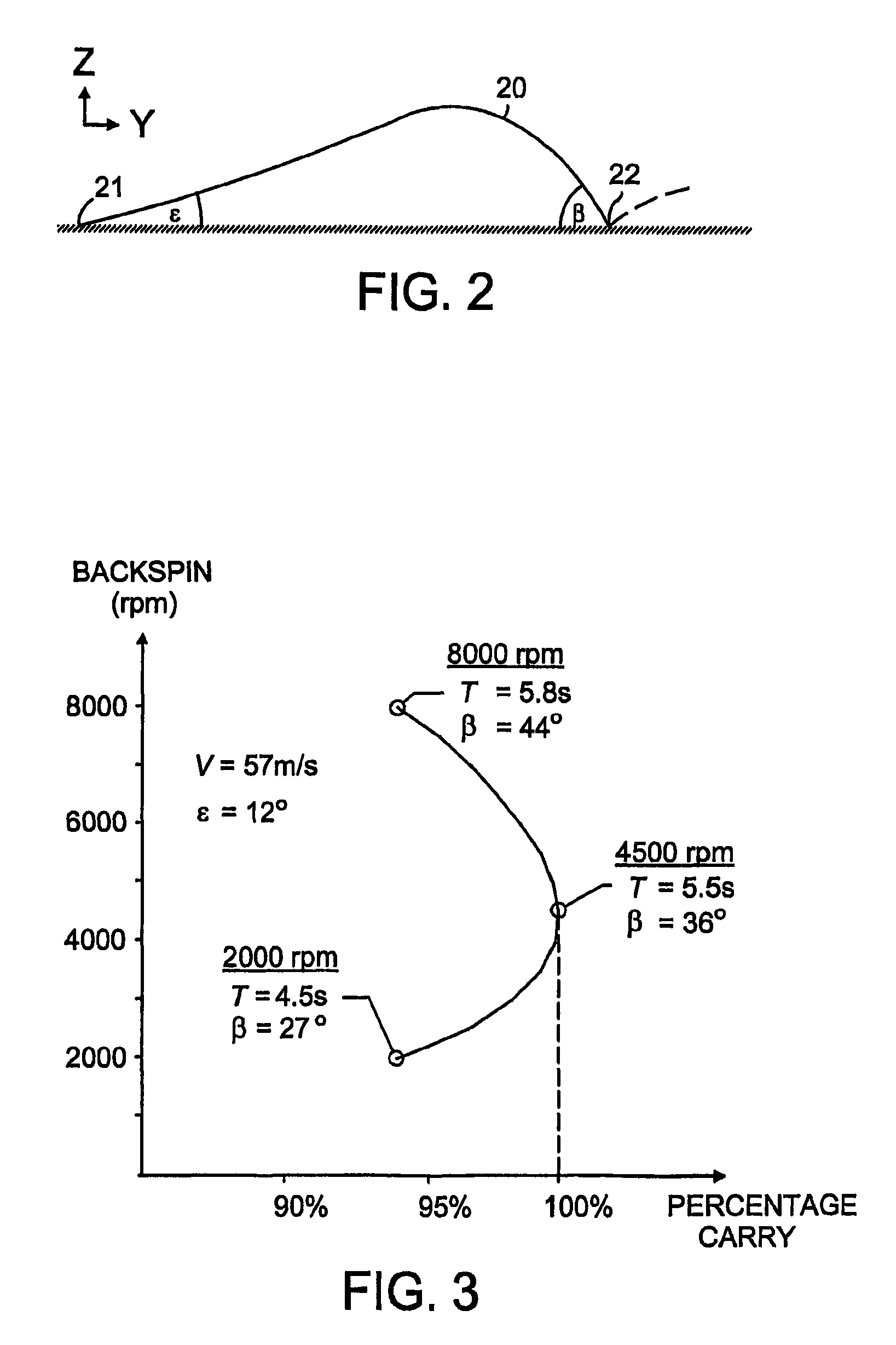Methods and systems for identifying the launch positions of descending golf balls
a golf ball and launch position technology, applied in golfing accessories, devices using time traversed, instruments, etc., can solve the problems of increased manufacturing cost, increased cost of manufacture, and possible degradation of the retro-reflective surface with frequent use, and achieves reduced lighting power and intensity, and the effect of easy detection
- Summary
- Abstract
- Description
- Claims
- Application Information
AI Technical Summary
Benefits of technology
Problems solved by technology
Method used
Image
Examples
Embodiment Construction
[0058]Reference axes X, Y and Z are shown for convenience in conveying orientation where this is appropriate in certain of the figures to which reference is made in the following description. In this respect, the Z-axis is vertical and points upwards, the Y-axis is horizontal and points downrange (i.e. along the general line of flight of a golf shot) and the X-axis is orthogonal to Y and Z and points in the left-to-right direction, looking downrange.
[0059]The block diagram of FIG. 1 outlines the top level system for a golf facility according to one aspect of the invention where several players hit golf balls into the same general area and sensing means are provided to identify the initial tee position of every shot.
[0060]Block 1 represents the primary input, which is a sequence of n balls hit at random times tn from random tee-off positions having co-ordinates xn, yn, and zn. Blocks 2 and 3 represent secondary inputs comprising various ‘disturbances’ or un-measured inputs such as a ...
PUM
 Login to View More
Login to View More Abstract
Description
Claims
Application Information
 Login to View More
Login to View More - R&D
- Intellectual Property
- Life Sciences
- Materials
- Tech Scout
- Unparalleled Data Quality
- Higher Quality Content
- 60% Fewer Hallucinations
Browse by: Latest US Patents, China's latest patents, Technical Efficacy Thesaurus, Application Domain, Technology Topic, Popular Technical Reports.
© 2025 PatSnap. All rights reserved.Legal|Privacy policy|Modern Slavery Act Transparency Statement|Sitemap|About US| Contact US: help@patsnap.com



